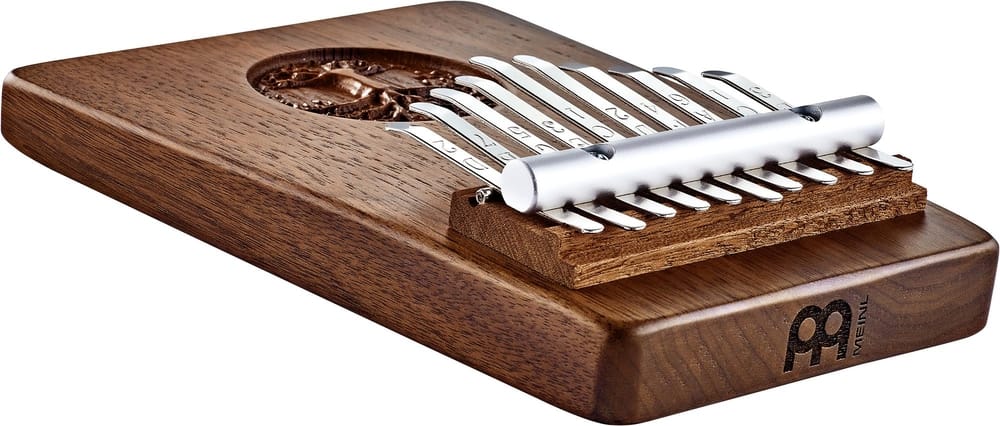Popularly known as “thumb piano” or mbira, the kalimba remains one of the most beautiful sounding ethnic instruments you can ever lay your hands on. Originating from the continent of Africa, the kalimba (mbira) is typical to the Shona people of Zimbabwe, southern Africa. Although being quite a traditional instrument, the kalimba, over the years, has found its way into the sounds of popular music greatly because of its piano-like tonal characteristic.
Music producers in both hip-hop and other contemporary genres have sampled and featured the kalimba. The kalimba might always sound like a traditional western piano to an untrained ear. As a matter of fact, if you listen more closely to contemporary hip-hop beats, you will always spot something that sounds like the kalimba.
Table of Contents
Is the Kalimba Easy to Learn?
The simplest answer to that question is that the kalimba remains one of the simplest and most fun musical instruments you can start learning. As a matter of fact, you don’t even need to know about music theory before you can start experimenting with the kalimba. Unlike instruments like the guitar or piano, the kalimba presents you with the ability to create amazing sounds in its simplest and most basic form. Think about the history of the instrument, the fact that it originated in a place and time where music theory wasn’t “a thing.” Playing the kalimba is more about musical intuition than it is about technicality.
The Kalimba is classified under the idiophone class of musical instruments. What this means is that it is a self-sounding instrument because it doesn’t need a vibrating reed, membrane, or resonating chord to produce sound. All you have to do to make the kalimba produce sound is to simply pluck it with your thumbs and fingers. It is not only simple to play, but it is also very versatile because you can play it both as a solo instrument and as an accompaniment. You can strike more than one note simultaneously with your thumbs or fingers to create harmonies or even play them individually to create beautiful melodies.
You Have Just a Few Notes to Play
One of the features that makes the kalimba quite an easy musical instrument to play is the fact that you have just very few notes to play when compared to other conventional instruments like the piano. There is a reason it is called the “thumb piano.” You don’t have to learn complex chords and scales. All you need is just a little sense of what sounds right and what doesn’t – and in minutes, you are already creating music. The simplest and most basic kalimbas might come with seven or eight keys (teeth, tines), while the more complex ones might come with seventeen or more keys. However, the truth is that even the most complex kalimba is relatively simpler than the simplest conventional musical instrument – if there is anything like that.
Kalimbas Come in Specific Keys; you Can Never Play a “Wrong Note”
While playing the kalimba, you will never encounter an “out-of-key” pitch because all kalimbas come in one key. This takes the simplicity of the instrument to an entirely new level. Depending on the key of the kalimba you buy, all you will need to do is learn just that key. All the notes on the kalimba will fall into that key, which means “no wrong notes.” However, it is also very important you keep your kalimba in tune as an out-of-tune kalimba can frustrate your first playing experience and thus make the kalimba seem hard to play.

Is the Kalimba Good for Beginners?
Considering how simple the kalimba is, it is undoubtedly an awesome choice for beginner musicians who are just starting with little or no knowledge of music theory. It is an exceptional instrument to learn and understand how melodies and simple harmonies work. The fact that you are presented with just enough notes and playing possibilities makes it quite a good choice for starters. Also, being quite a portable instrument makes it another great choice for beginners because they can easily carry it around and play it anywhere without attracting attention. The kalimba can provide a simple way to understand music on a larger scale.
How Long Does it Take to Get Good at Kalimba?
Every musical instrument (regardless of how simple) requires constant practice and commitment. The same goes for the kalimba. It is simple to start playing and making music on it, but you still need to put in months or even years of practice to become very good at it. The more you play, the more you get to discover the instrument’s nuances. It is quite easy to play, but you need to keep playing to get better at it. Therefore, every musical instrument requires a lifetime commitment. However, if you are familiar with playing other similar instruments, learning to play kilimba can be done in as little as 2 hours if you modify a song into an easy version comprising of just single notes. However, complicated songs can take between 5 and 10 hours.
Where is Kalimba Popular?
The kalimba originated from the southern parts of Africa, Zimbabwe, precisely. The kalimba (mbira) is quite popular in Africa. But, the kalimba is also popular in other parts of the world as it has become a universal musical instrument.
Leave a Reply